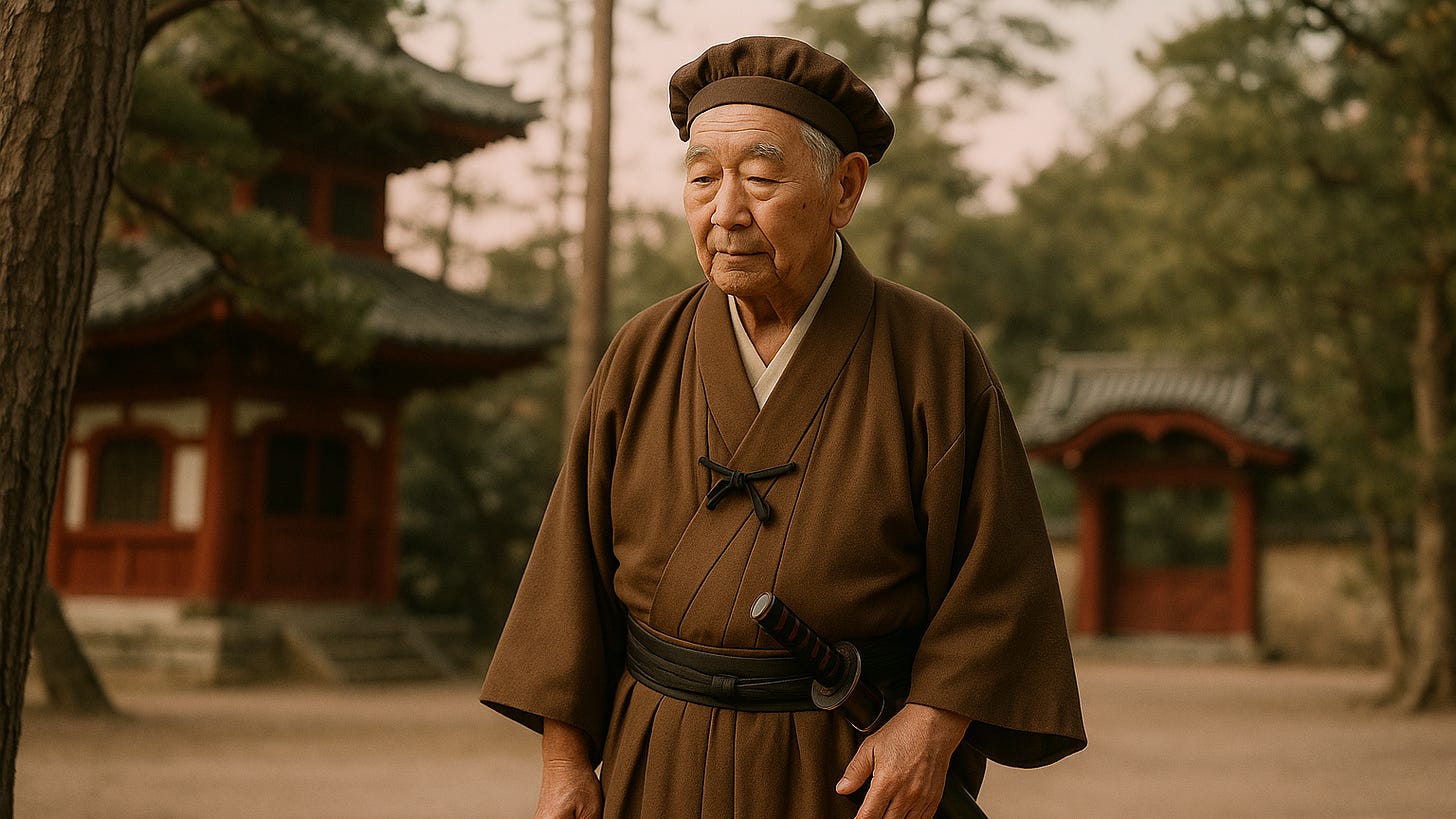During the Sengoku period, Miyoshi Nagayoshi (三好長慶, 1522-1564), a warlord who controlled the Kinai region, expanded his power by bringing the autonomous merchant city of Sakai under his influence. The merchants of Sakai skillfully maintained a balance between practical benefits and autonomy by carefully assessing the political situation of the era, occasionally forming strategic alliances with powerful warlords (daimyo, 大名), thus preserving and furthering Sakai’s unique culture. Amidst this challenging period, the people of Sakai honed their political skills through intricate navigation of complex circumstances, ultimately giving rise to a significant cultural current in Japanese history. This cultural development was “tea ceremony,” or more accurately, a profound blend of “Zen and tea.” Today’s concept of tea ceremony (茶道, sadō) as a well-established cultural practice developed much later; its origins lie deeply rooted in sophisticated philosophical and cultural traditions.
Firstly, in 1557, Nagayoshi constructed Nanshū-ji Temple (南宗寺), affiliated with the Daitoku-ji school of Rinzai Zen Buddhism, in Sakai as a memorial to his late father, Motonaga. The roots of this temple trace back approximately thirty years earlier to 1526, when a famous monk named Kogaku Sōkō (古嶽宗亘, 1465-1548) of Daitoku-ji Temple in Kyoto established a hermitage called “Nanshū-an” (南宗庵) in Sakai. Due to the early death of Sōkō’s initial successor, another disciple named Dairin Sōtō (大林宗套, 1480-1568) took over as the third-generation successor, marking the beginning of significant cultural history from this point onward.
This was largely because Miyoshi Nagayoshi had profound reverence for Dairin Sōtō, inviting him to become the founding abbot upon the establishment of Nanshū-ji Temple. At this juncture, Nanshū-ji became a symbolic nexus linking the Miyoshi regime and the vibrant merchant culture of Sakai during the turbulent Sengoku period. Nagayoshi invited his revered master Sōtō to establish the temple in the vicinity of the present-day Shukuin-chō area in Sakai city, developing it into a grand temple. Given this historical backdrop, Nanshū-ji Temple served both as the Miyoshi family’s ancestral temple and as a spiritual and cultural cornerstone for Sakai’s merchant community. Later, in 1615, Nanshū-ji Temple was destroyed during the Siege of Osaka (大坂夏の陣), the largest battle between the Toyotomi and Tokugawa clans for nationwide dominance. However, this cultural beacon in Sakai was rebuilt at the beginning of the Edo period, largely due to the efforts of the renowned Zen monk Takuan Sōhō (沢庵宗彭, 1573-1645), maintaining its close ties with Sakai thereafter.
But how exactly did this Nanshū-ji Temple become the cradle of the tea ceremony tradition we recognize today?



